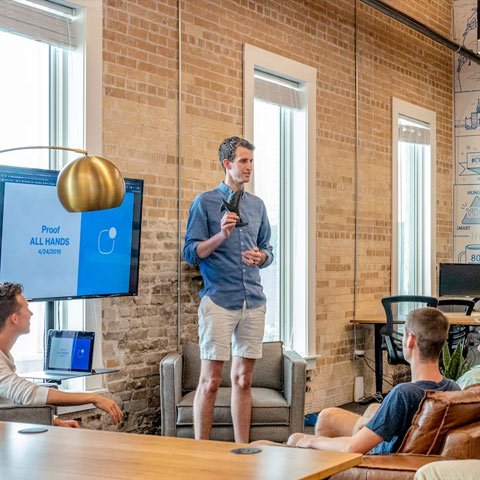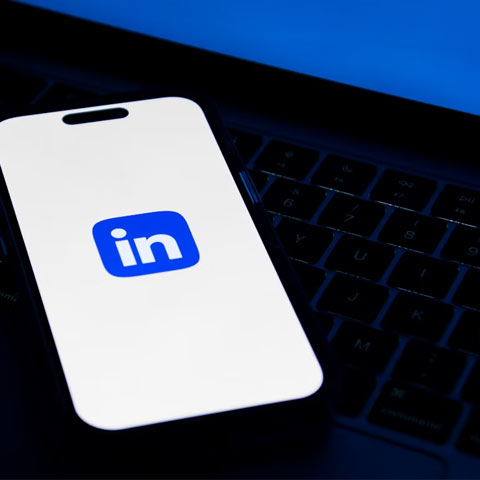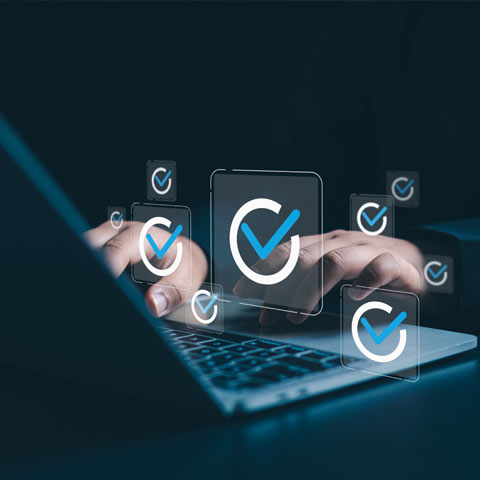Choosing Your DAM Solution

Get the downloadBelow is an excerpt of "Choosing Your DAM Solution". To get your free download, and unlimited access to the whole of bizibl.com, simply log in or join free. |

|
Introduction
First, let’s get the fact this paper is written by us, a vendor, out of the way. With decades of experience in enterprise software, the team here has been around the block a few times. While yes, as a software vendor, we are burdened with the perception that we have a vested interest and a Jedi mind trick tucked up our sleeves, this experience has taught us that a great procurement process makes for a great project.
Choosing your DAM is a foundational decision which will bring either heaven or hell to your organization over the next 4 or 5 years, so it is better for everyone involved to realize early on whether a particular collaboration is going to work out or not. Yes, even for us vendors.
It’s a decision which is hard to navigate, the DAM industry is a crowded market and there is a lot of shiny stuff out there. So before you start sending out RFPs and scheduling demos, it’s important to know the criteria you should be looking for.
Therefore, it’s essential to conduct a thorough procurement process instead of rushing into a shotgun wedding.
Our HOT DAM 10 Recommendations
With that in mind, we’d like to share our Hot DAM list of 10 factors you should take into account when selecting Digital Asset Management software.
1. It meets the 10 core DAM requirements
Let’s get the basics out of the way first. Back in 2014, the DAM Foundation (no longer active) defined the following as core DAM requirements:
- Ingesting assets individually or in mass sets, and allowing for the manipulation of those assets and their metadata individually or with mass actions.
- Securing assets. Security in a DAM extends to defining access control lists (ACLs) for assets and defining roles for users accessing the system.
- Storing assets as both binaries and metadata. A DAM system can store multiple file types, and allows for the customization of metadata fields and the metadata in those fields to be attached to the stored files.
- Rendering/transforming assets on ingest into new forms, such as thumbnails or proxy files.
- Enriching assets through the extension of metadata and metrics regarding the use and reuse of the asset throughout its lifecycle.
- Relating assets by tracking the relationships between and among an original asset and versions/ variants of the original. Versioning and version control tools are central to an asset’s life in a DAM system.
- A structured process in the management, creation, and review of assets with workflow tools. Via programmed workflows, DAMs allow for a decentralized work force to collaborate together in a centralized system.
- Finding and retrieving assets by facilitating search via metadata, collections, workflows, and access control tools.
- Previewing assets before a user downloads or opens a file on their own device.
- Producing/publishing content by providing methods whereby assets may be shared, linked, or otherwise distributed outside the system.
But, of course, your requirements are not basic and generic, this is just the start. Read on for more of what you might need to consider.
2. It’s more than a DAM
Yes, you might be looking for a DAM, but our second piece of advice is that you probably need more than a DAM … bear with us on this.
Analysts are increasingly considering DAM to be the center of digital experience and content operations:
“Digital Asset Management is foundational to everything that marketers do, rich media is now so essential for captivating customers”
This offers an opportunity. While today you may be responsible for replacing something your business already has, or for filling a silo that has been defined by procurement, this is actually your opportunity to revolutionize your content operations. Yes, revolutionize.
Our clients have seen significant cost and time savings when implementing a solution that not only replaces their existing Digital Asset Management, but also their Product Information, Marketing Resource Management and Web Content Management systems.
This one platform approach also helps to sweep away those inefficient operational silos and get your people collaborating across the whole content supply chain.
If you are considering this, either now or within the lifetime of your DAM solution, widen your requirements and consider your future needs.
3. Together, you will be the DAM ‘A team’
Those vendor guys, presenting at the front of your room, are going to be your business partner for the next three to five years. This is the start of a meaningful relationship and like all meaningful relationships, it takes time to build. But this is no slow burn courtship; in the procurement process you don’t have long to make sure that these guys are the ones for you before making a commitment.
OK, so maybe this sales team might not contain the actual people you will speak to on the next 250 weekly status calls, but this is your opportunity to get a feel for the organization’s culture as it needs to be a good fit for you and your colleagues.
Most industry analyst agree that choosing your vendor is an important decision, as a great implementation team can do great things with mediocre software, but a mediocre implementation team will give you a mediocre implementation, however great the software is.
“Even with the world’s best technology, a mediocre team will deliver a mediocre implementation”
The quality of your team, its relationship with the vendor, and the strength of any implementation partners are all factors which are key to taking your DAM solution from mediocre to great.
So use the selection process to really get a feel for the organization. Be open about what motivates your project, what you consider success to be and your budget.
Ask whatever you like, meet the project manager, and make time for networking outside of the usual formal meetings – maybe take them for a beer (or a coffee) – whatever the procurement process allows.
And that’s just the cultural fit. These guys are going to be key contributors to the innovation that will drive this project forward, that will contribute to making the most of not just the technology but also the people and processes that you will need to change and influence to make the project successful. Knowing their software is the minimum entry requirement to your team, but do they have great ideas outside of that?
You can also learn a lot about someone by the company they keep, so try to spend time with their references, other clients or partners, and attend events they will be at. And don’t be shy, ask these guys what it’s really like to work with this vendor.
4. The technology is relevant
All that glitters is not gold and however unglamorous it maybe, you need to lift the hood of this software (or have someone on the team who can) and poke around at what’s driving the product.
The software industry is littered with sad stories of vendors buckling under the weight of having to rearchitect their solution as their foundations fail to keep up with the times. It’s an expensive job that has been the death knell of many once fine software businesses.
But don’t cry for them, cry for their customers who found themselves working with technology that had suddenly gone the way of the dodo.
The advice here is to do your technical due diligence and explore the software’s back end – is it shiny and modern or a legacy lead weight waiting to sink your project? Meet the folks that lead their product development, find out the level of R&D investment, what the road map looks like and their perspective on upcoming trends.
5. There’s help when you need it (and you will!)
The truth of a software implementation project is that sometimes there will be bumps in the road, so find out what your customer experience will be after you have purchased the product – how did other clients manage those bumps and did the vendor support them?
Not only are you forming a relationship with the vendor, who will of course be your primary contact for help and support, but also with a technical community of people skilled in implementing and using that product. Undertake some due diligence on who else is out there who knows this product.
Support and maintenance agreements vary, so ensure that you understand the needs of your organization before entering into these negotiations. For example, do you need 24x7 support? What are the critical times for your business? Does the geographic spread of the vendor’s support teams match those of your own business?
6. It’s YOUR solution
It’s easy for your procurement team to have its head turned by a shiny vendor demonstration, the latest trends mentioned in a Forrester or Gartner report, or something that’s hitting the industry zeitgeist at that moment (remember when everyone was talking about Pinterest?).
So it’s critical that your requirements are a defendable set of needs for your organization and not a fanciful wish list that even the most generous industry Santa Claus would baulk at. Your potential vendor needs to understand exactly what’s important to you.
Make it really clear which requirements are a priority for you. Give each requirement a business owner, a demo scenario, and be dogged in your pursuit of seeing these in your prospective digital asset management system or at the very least a solid approach from the vendor or partner that would satisfy this need.
If you invest in a solid set of defendable requirements, this will give your project a fantastic springboard to success when it comes to implementation, cutting down much of the analysis and detailed requirement gathering that is the typical precursor to an enterprise software implementation – a period that can frustrate stakeholders as they hop from foot to foot, anxious to play with their new toy.
7. You have a future together
With the speed of digital disruption today, there is a strong chance that some of the requirements you write today are going to become obsolete during the lifetime of your program and software lifecycle. You need a vendor partner and platform with the agility to shift according to the needs of your organization, industry and of course your consumer.
Plus, we already touched on this, the product and the technology has to have some longevity, that there is a clear plan and investment that will mean that this technology will still be relevant tomorrow.
Then there is the sad commercial fact that despite it being around for almost 20 years, the content management industry is still in a state of flux, with vendors fading from view and others being acquired. With this in mind it is advisable to sign an NDA and scratch below the surface of your vendor’s financials if you can and ask yourself – is this a healthy company which will still be around in five years?
8. It plays nice with what you already have
Unless you are making a radical shift with your digital experience solution architecture, or you are in the enviable position of starting from scratch with the mythical “green field site” that is the stuff of marketing technologists’ dreams, this solution will need to plug into an existing ecosystem of content repositories and systems of engagement or experience (such as web delivery infrastructure, marketing automation, social media or mobile applications).
It is therefore important to ensure that your requirements are very specific on the nature of these integrations. Some of your critical systems might be a little old and the young code jockey’s smart comments about REST API’s might not cut it with grand-pappy AS/400 over there.
9. It’s affordable
The first step in sourcing an affordable solution is to spend time figuring out what you can really afford. What’s the business case? What return are you expecting and over what period of time? What is your preferred way to finance – do you have capital to spend or would you prefer to rent a solution with a monthly operational budget, or do you have a mix of both?
The next step is to avoid underestimating the cost of investment post launch. As we touched on earlier, your requirements will evolve over time, maybe even over the implementation project, and enterprise software implementation rarely ends with a project manager dropping the mic and exiting stage left, with the satisfaction of building something that will outlast the pyramids. It’s a living breathing thing which will need to grow and evolve alongside the business.
And finally, you need to keep a close eye on the “Total Cost of Ownership”, especially when comparing different commercial models. Consider such things as:
- Open Source– this may appear commercially attractive at first, but it’s free puppies not free beer. Like a puppy, it needs looking after and by the time you factor in the hosting, implementation and development costs, it may be comparable with an off the shelf product, especially a SaaS solution. Yet, an off the shelf product will provide the comfort of a commercial organization to support you under the close governance of a commercial license.
- ‘Software as a Service’ models– these are not always as simple as turn the key and pay per month to rent. There are set up and onboarding costs, as well as the costs of seemingly innocuous things such as additional development machines, or QA environments that can quickly add up.
- A one off perpetual license – this can work for some organizations, but when compared with a SaaS solution you need to add in all the hosting, failover, scaling and support costs that the software would require to make this internal service comparable with a vendor SaaS solution.
Of course, each has its advantages and disadvantages, it’s a matter of best fit for your organization.
10. Your users will love it
We’ve saved the best to last!
If there is one thing that will gauge the success of the project and be its number one risk going forward, it’s user adoption.
Immediately after going live, the thrill of something new and the cajoling of the business stakeholders will drive engagement from your internal audience, but the real test will come about a year into its life.
At this point in time, a few key people first involved in the project might have moved on, the discipline may be forgotten, and if people don’t like working with the product, they could quickly lapse into their old ways and a groundswell of disgruntled users will start a whispering campaign that the DAM is the problem. Sooner than you expected you are back here again, putting your business on hold and planning to rip out this failed project and start afresh.
To avoid this, try to involve a broad range of stakeholders in your selection process, including not just the people that manage departments, but also those people who will really use the product from day to day. It’s especially important that these guys are involved in the demonstrations, workshops, and, if your procurement process allows you the time, the Proof of Concept (PoC).
Conclusion
So that’s our Hot DAM 10 list of things you need to consider when selecting Digital Asset Management software. It’s clear that investing time now, focusing on defining these requirements, doing the due diligence and finding the right partners will pay dividends once the project is underway and ensure that it continues to deliver value as a business-critical system for years to come.
About censhare
censhare is a universal, smart content management software vendor that provides content and marketing solutions which solve the digital transformation challenges of collaboration and personalized communication for global brands such as Dyson, GoPro, Jaguar Land Rover, Kohls and Hearst Media Group (publishers of Cosmopolitan magazine).
Organizations choose censhare because its solution brings efficiency to managing digital assets and product information for publication to multiple channels (including web, print and social) in multiple languages and personalized to the consumer on a very large scale. censhare can do this, as it uses an innovative semantic database technology which is incredibly fast and efficient at delivering contextualised, highly personalized content.
Want more like this?
Want more like this?
Insight delivered to your inbox
Keep up to date with our free email. Hand picked whitepapers and posts from our blog, as well as exclusive videos and webinar invitations keep our Users one step ahead.
By clicking 'SIGN UP', you agree to our Terms of Use and Privacy Policy


By clicking 'SIGN UP', you agree to our Terms of Use and Privacy Policy









